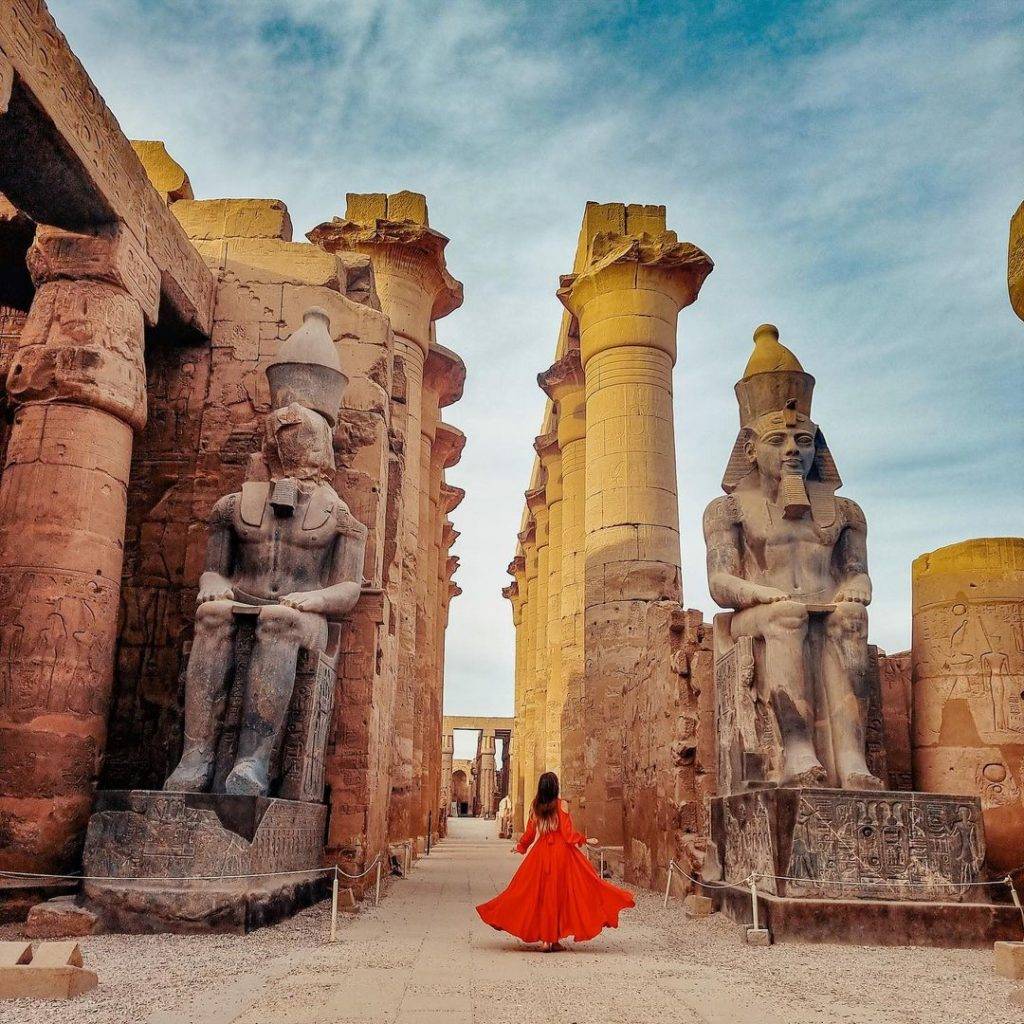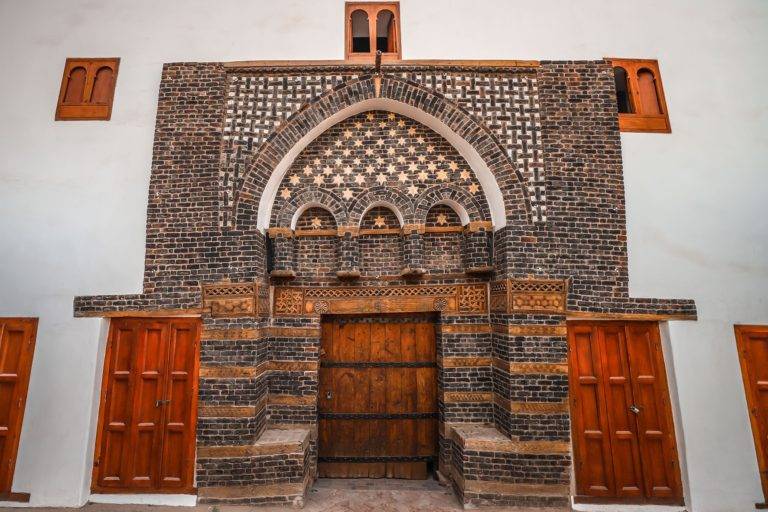What To Wear In Egypt
The ultimate Egypt packing guide
Luxor isn’t just another destination on your travel bucket list—it’s a living, breathing journey into ancient Egypt. Often referred to as the world’s greatest open-air museum, this timeless city, situated along the Nile River, invites you to walk through history. But trust me—having the right gear can make the difference between an unforgettable adventure and a sunburned, blister-filled regret.

Beat the Heat: Understand Climate
Your first step? Packing for the right season.
Winter (Dec–Feb): Temperatures range from 10 °C to 25°C (50°F to 77°F), with cooler mornings and evenings. It’s peak tourist season—pleasant weather, but expect crowds and higher prices.
Summer (May–Sept): Expect scorching heat—temperatures often soar above 40°C (104°F). Fewer tourists, cheaper rates, but your survival gear needs to be on point. This is for the true desert warriors.
Shoulder Seasons (Mar–Apr, Oct–Nov): Sweet spot temperatures around 20–35°C. Perfect weather with fewer crowds—ideal for budget-conscious travelers who want the best of both worlds.
Luxor Tours & Activities
Looking to save some costs on your travel? Why not join a shared group tour to explore Luxor, Egypt? Here are some activities you might be interested in:

Winter Packing: Layers, Comfort, and Flexibility
Winter in Luxor feels like spring elsewhere—sunny and dry, with crisp mornings and cooler nights. You’ll start your day in a sweater and end it in a t-shirt.
What to pack:
Linen or cotton shirts: Lightweight and breathable for warm afternoons. Long sleeves offer sun protection while keeping you cool when temperatures rise.
Long pants or loose trousers: Keep you warm in the mornings and protect your legs from sand and sun. Pack both lightweight and slightly warmer options.
Light sweater or fleece jacket: Perfect for chilly Nile cruises, early morning hot air balloon rides, or sunset felucca trips. Trust us, you’ll need this more than you think.
Windbreaker or light jacket: Desert nights can drop in temperature dramatically—don’t be caught shivering through a magical stargazing session.
Comfortable walking shoes: Closed-toe with excellent grip for temple floors and uneven ancient paths. Your feet will thank you after miles of exploration.
Versatile scarf: Essential for cool mornings, sun protection during the day, and modesty when visiting sacred sites.

Summer Packing
Essentials include:
Ultra-lightweight, loose clothing: Think premium linen or moisture-wicking fabrics. Avoid synthetic tight clothes—they’ll turn you into a walking sauna.
Wide-brimmed hat with chin strap: Shields your face, neck, and sanity.
Flowy dresses or robes/loose shirts & pants: The more air circulation, the better. Think desert nomad, not beach vacation.
Breathable scarf or shemagh: Wear it around your neck, use it as a face mask during dusty winds, or wet it to cool yourself—multi-functional lifesaver.
High-SPF sunscreen (50+): Apply generously. Reapply religiously. Then reapply again. The sun shows no mercy.
Premium UV sunglasses: The sun bouncing off sand and limestone is blindingly intense—invest in quality wraparound lenses.
Cooling towel: Soak it in water and wear it around your neck. Ancient desert trick that works.
Summer Pro Tip: Freeze water bottles the night before temple visits. They double as cold drinks and instant cool packs when pressed against pulse points.

Year-Round Sun Protection: Non-Negotiable
Even in winter, Luxor’s sun is deceptively intense. The reflection from sand and temple stones magnifies UV exposure dramatically—many travelers get burned thinking “it’s not that hot.”
Sunscreen (SPF 50+): Apply 30 minutes before sun exposure. Reapply every 2 hours, more if sweating. Don’t forget ears, feet, and the back of your neck.
Wide-brim hat: Choose one that won’t fly off in winds. A chin strap isn’t fashionable, but it’s practical.
Sunglasses: Wrap-around UV protection is ideal. Cheap sunglasses can damage your eyes more than no sunglasses.
Scarf/shawl: Offers flexible sun, dust, and modesty coverage. Choose a breathable fabric that you can wrap multiple ways.

Hydration & Health: Stay Energized, Stay Safe
Reusable water bottle: A must in every season. Choose an insulated one for summer that keeps water cool for hours. Aim to drink before you feel thirsty.
Electrolyte tablets (summer essential): Replace salts lost through heavy sweating. Plain water isn’t enough when you’re sweating buckets in 40°C heat.
Hand sanitizer: Handy before eating street food or after exploring dusty tombs and touching ancient stones.
Pocket tissues or toilet paper: Public bathrooms may lack supplies—veteran.
Basic first aid kit: Band-aids, pain relievers, anti-diarrheal medication, and any prescription medications you need.

Footwear: Function Over Fashion
Luxor’s paths are ancient, uneven, and sandy. Your Instagram-worthy sandals won’t cut it here.
Well-broken-in walking shoes: Supportive, closed-toe, and grippy. Break them in at home—blisters in the desert are miserable.
Sandals with good arch support (optional): Great for less demanding hotel strolls or evening walks along the Nile.
Backup pair: In case your main shoes break or give you unexpected blisters. Better safe than hobbling through the Valley of the Kings.
Moisture-wicking socks: Multiple pairs. Your feet will sweat, even in winter, and damp socks lead to blisters and discomfort.

Respecting Sacred Spaces: Dress with Cultural Awareness
Luxor may be touristy, but Egypt remains culturally conservative. Respectful dressing opens doors—literally and figuratively.
Scarf or shawl: Essential for visiting mosques or conservative areas. It’s a sign of respect and sometimes strictly required for entry.
Covered shoulders and knees: A good rule when exploring rural areas. You’ll feel more comfortable, and locals will appreciate the respect.
Multi-use shawl: Also doubles as a dust mask during sandstorms, picnic blanket, cooling wrap when wet, or even a pillow on long bus rides.

Tech & Travel Gear
Power bank (high capacity): Outlets aren’t always available at remote temple sites. Don’t let your phone die mid-photo opportunity—these moments are once-in-a-lifetime.
Universal adapter: Egypt uses Type C and F plugs. Bring a quality adapter to charge multiple devices safely.
Camera or phone with extra storage: Trust us—you’ll take hundreds of photos. Bring extra memory cards or ensure cloud backup works.
Offline maps app: The Internet can be spotty at archaeological sites. Download maps of Luxor before you go.

Bonus Items Worth Packing
Mosquito repellent: Especially crucial for Nile cruises and evening activities near water.
Travel journal and pen: For capturing those spontaneous “wow” moments that photos can’t convey.
Guidebook or downloaded guides: Context makes ancient sites infinitely more meaningful.
Cash in small denominations: Many vendors, taxis, and tip situations don’t accept cards. Have plenty of small Egyptian pounds.
Wet wipes: For quick cleanups after dusty tomb explorations or before eating.
Headlamp or small flashlight: Some tombs and temples have poorly lit areas where you’ll want extra illumination.
Compression socks: For long flights and extensive walking days.
What Not to Pack
Heavy jeans or tight clothing: Uncomfortable, hot, and restricts movement when climbing into tombs.
Valuables or flashy jewelry: Better to blend in than attract unwanted attention.
Cotton underwear: Synthetic moisture-wicking materials are far more comfortable in heat and humidity.
Did you know that
By purchasing through our links, you support us at no additional cost.
Thank you for your support. ♥️






